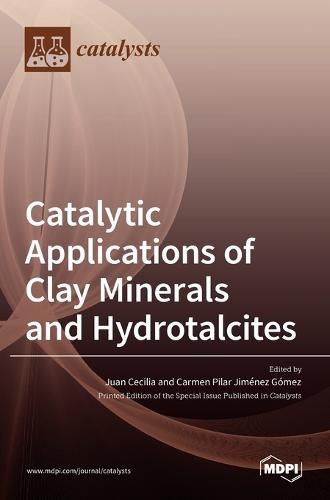Readings Newsletter
Become a Readings Member to make your shopping experience even easier.
Sign in or sign up for free!
You’re not far away from qualifying for FREE standard shipping within Australia
You’ve qualified for FREE standard shipping within Australia
The cart is loading…






This title is printed to order. This book may have been self-published. If so, we cannot guarantee the quality of the content. In the main most books will have gone through the editing process however some may not. We therefore suggest that you be aware of this before ordering this book. If in doubt check either the author or publisher’s details as we are unable to accept any returns unless they are faulty. Please contact us if you have any questions.
Clay minerals are inexpensive and available materials with a wide range of applications (adsorbent, ion exchanger, support, catalyst, paper coating, ceramic, and pharmaceutical applications, among others). Clay minerals can be easily modified through acid/basic treatments, the insertion of bulky ions or pillars into the interlayer spacing, and acid treatment, improving their physicochemical properties.
Considering their low cost and high availability, clay minerals display a relatively high specific surface area in such a way that they have a great potential to be used as catalytic supports, since they can disperse expensive active phases as noble metals on the porous structures of their surfaces. In addition, the low cost of these supports allows their implementation on an industrial scale more easily than other supports, which are only feasible at the laboratory scale. Hydrotalcites (considered as anionic or basic clays) are also inexpensive materials with a great potential to be used as catalysts, since their textural properties could also be modified easily through the insertion of anions in their interlayer spacing. In the same way, these hydrotalcites, formed by layered double hydroxides, can lead to their respective mixed oxides after thermal treatment. These mixed oxides are considered basic catalysts with a high surface area, so they can also be used as catalytic support.
$9.00 standard shipping within Australia
FREE standard shipping within Australia for orders over $100.00
Express & International shipping calculated at checkout
This title is printed to order. This book may have been self-published. If so, we cannot guarantee the quality of the content. In the main most books will have gone through the editing process however some may not. We therefore suggest that you be aware of this before ordering this book. If in doubt check either the author or publisher’s details as we are unable to accept any returns unless they are faulty. Please contact us if you have any questions.
Clay minerals are inexpensive and available materials with a wide range of applications (adsorbent, ion exchanger, support, catalyst, paper coating, ceramic, and pharmaceutical applications, among others). Clay minerals can be easily modified through acid/basic treatments, the insertion of bulky ions or pillars into the interlayer spacing, and acid treatment, improving their physicochemical properties.
Considering their low cost and high availability, clay minerals display a relatively high specific surface area in such a way that they have a great potential to be used as catalytic supports, since they can disperse expensive active phases as noble metals on the porous structures of their surfaces. In addition, the low cost of these supports allows their implementation on an industrial scale more easily than other supports, which are only feasible at the laboratory scale. Hydrotalcites (considered as anionic or basic clays) are also inexpensive materials with a great potential to be used as catalysts, since their textural properties could also be modified easily through the insertion of anions in their interlayer spacing. In the same way, these hydrotalcites, formed by layered double hydroxides, can lead to their respective mixed oxides after thermal treatment. These mixed oxides are considered basic catalysts with a high surface area, so they can also be used as catalytic support.